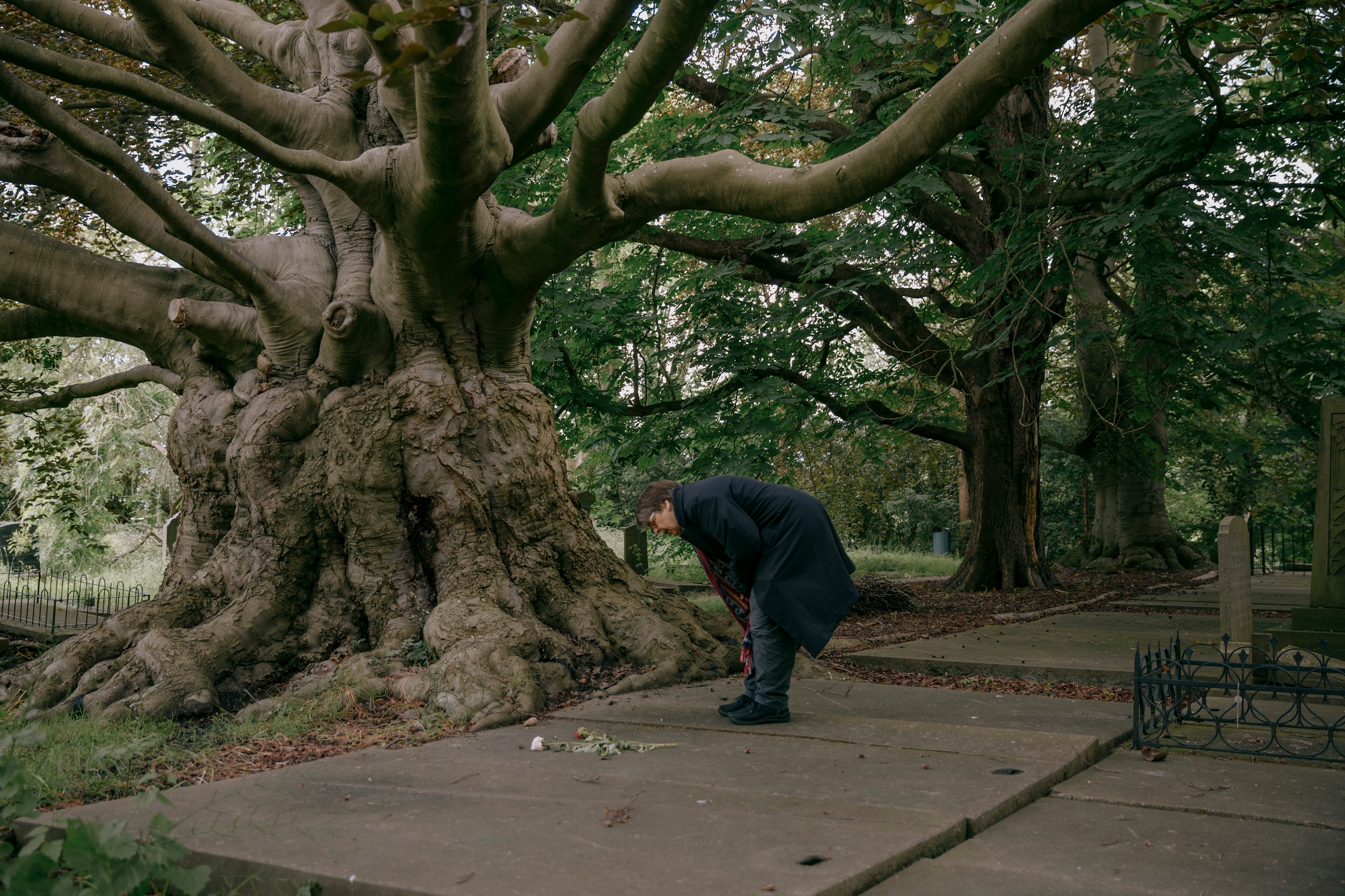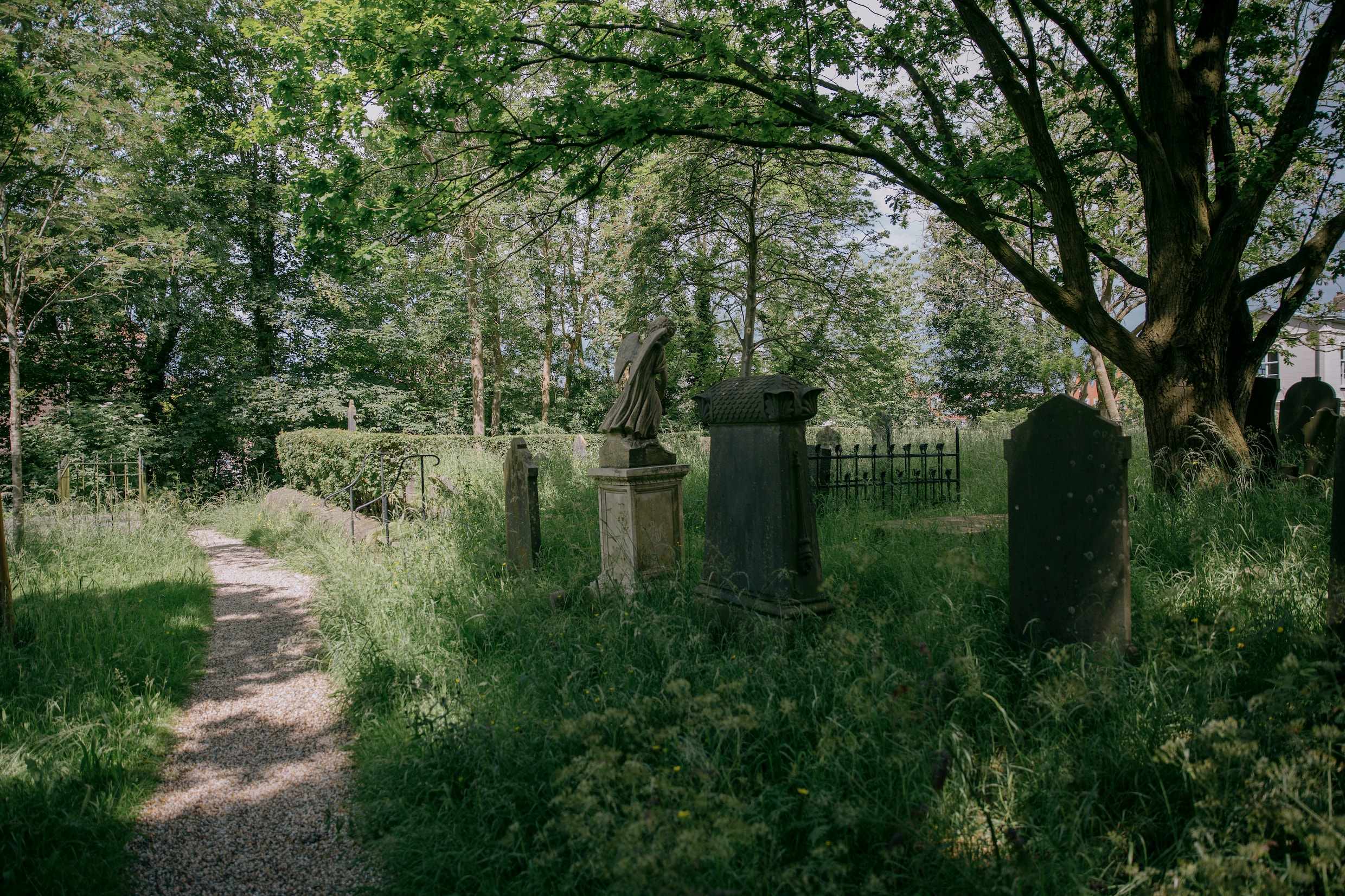Cultural historian Korrie Korevaart stands on the gravel path of the Groenesteeg cemetery in Leiden, among lush greenery, towering old trees and crooked headstones. Korevaart is a member of the board of directors of the Terebinth foundation, committed to funerary heritage; cemeteries. Historically they are as important as mills and castles, Korevaart explains enthusiastically. “But now we understand the importance of that.”
‘You don’t talk about what you don’t see’
Meanwhile, the cemeteries are prey to developers, who buy the land to convert them into building plots. An eternal shame, says Korevaart. “Memories are activated by what you see. Visitors see the tombstones here and wonder: who are these people buried here? Maybe it’s didactic nonsense, but I think it has great social importance. “You don’t talk about what you don’t see.”
For this reason, the Terebinth Foundation awards every two years the cemetery that has made the most efforts to preserve funerary heritage. This year the Groenesteeg cemetery will receive the corresponding shield on Saturday, among other things for “the extensive commitment of the volunteers.”

Groenesteeg lies between Leidse Singel and a smaller body of water, over which is the corresponding “Last Bridge”, which gives access to the cemetery. Before its founding in 1813, people were buried in the church in the center, but it was not a complete success. “It was unhygienic and smelly on a Sunday,” says Korevaart, asking that the cliché about the rich and stinky be omitted.
Music and art among the tombstones
That is why the first cemeteries, like this one in Leiden, look like a church. He points out the oldest graves, which together form a floor of tombstones. Above the stones rises an old twisted beech tree, the trunk of which looks as if ten trees had grown together.

More and more attention is being paid to vegetation in cemeteries, says Korevaart. In Groenesteeg they practice ecological management, to make it attractive to insects and absorb the heat of the city. “So it may seem like nature can take its course here, but it is carefully thought out.”
In times when people are more likely to opt for cremation or a natural cemetery, old cemeteries need to be reintroduced to the market. For this reason, many cemeteries promote a “multifunctional use,” points out the historian, and fulfill the function of a park. They post signs with information about graves and plants, offer a walking route, or offer space for music and art.
‘A green oasis of peace’
Sometimes this causes some consternation, especially in cemeteries that are still in use or “living” as Korevaart calls them. “Some people think that cemeteries are only there for mourning, that theater doesn’t fit there or that you shouldn’t walk there simply for pleasure.”

However, he does see a change in the way cemeteries are managed. This Friday morning in Groenesteeg, two people sit on a bench chatting. A woman walks calmly with headphones on, studying a tombstone here and there. “This is a fantastic place of silence,” Korevaart concludes. “A green oasis of peace amidst the hustle and bustle of the city.”
Behind many cemeteries there is a foundation with dozens of volunteers who are in charge of the operation and often fight before the municipality for the right of existence of their cemetery. In this sense, according to Korevaart, the cemetery is also a social place. By the way, not only for volunteers, but also for visitors. “Many people know each other from the cemetery, whether they work or walk there. And often something beautiful comes out of it.”
Five beautiful cemeteries to walk
The Terebinth Foundation publishes books with walks through cemeteries, On the green grass, to which Korevaart contributed. A disaster, he thinks, to choose the five most beautiful of all those cemeteries. Still, “to start”, the five that, according to the expert, are absolutely worth a walk:
– Moscow (Arnhem)
– Oud Eik in Duin (The Hague)
– Tongerseweg (Maastricht)
– Westerveld (Driehuis)
– Zorgvlied (Amsterdam)